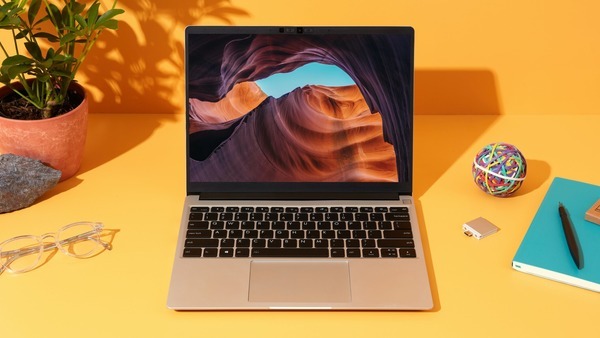This was a pretty cool device in 2017. Nobody make laptops like this, even now. (Google)
The Pixelbook is one of those lines of machines that, though I never owned one myself, I found myself asking if it might potentially be worth having one to kick around the house.
The original model, released in 2017 after Google released a couple of Chromebook generations under the Chromebook Pixel line, was a fascinating device because of what it tried to do at the time of its release. It didn’t look like anything else on the market, with its silicone palm rests offering a completely different approach to any other laptop. It had huge bezels for its 12-inch size, but that was simply something that made it better for tablet uses. And while reviewers found it a little weird, it was weird in a good way, as in, we hope Google iterates on this model.
Which is why, of course, Google never directly iterated on it—and five years after the release of the fascinating experiment of a device, it appears that the Pixelbook dream is dead. Word from The Verge is that the company decided to shut down the program and move the team elsewhere, after releasing just three Pixelbook devices, with the most recent, the Pixelbook Go clamshell laptop, coming out in 2019.
Maybe the line cost a little more than the usual budget-minded Chromebooks that usually fill classrooms, but it at least kind of earned its additional expense by giving other Chromebook makers something to aspire to, much as Microsoft has more successfully done with its Surface line of laptops.
In some ways, the decision to pause development on the Pixelbook line is a bit sad. It hits as Google’s other hardware ambitions were just hitting their stride. The Pixel line of phones, after a few generations of being just OK, are now seen as all-around solid choices for most users. And word was that the company planned on moving away from Intel for the next iteration of the Pixelbook, in favor of its in-house Tensor chip, which might have allowed the device to hit a more reasonable price point and performance level than the earlier models had.
(One knock on the earlier Pixelbooks was their use of Y-series Intel chips, the same low-powered line of chips that once gave Apple’s 12-inch MacBook its somewhat mediocre status. Dollars to donuts, if you put a Tensor chip in the 2017 Pixelbook design and shrank the bezels slightly, it would have been a winner.)
I still can’t get over the fact Google followed up the Pixelbook with such a disastrous device.
But in other ways, the model simply seemed to never gel. The original Pixelbook was a solid execution if an imperfect device that I admire all these years later; its follow-up, the Pixel Slate, was a poorly reviewed hot mess, a tablet with an Intel chip that didn’t work well and a software offering that was simply not ready to go full tablet. The 2019 Pixelbook Go, while using better hardware and getting a better response, seemed to never shake its “overpriced” status.
One wonders if Google might have just been better off making one Pixelbook, which offered a pretty good starting point, and continually making it slightly better each year, something that other Chromebook makers, such as HP and Lenovo, do a pretty good job at. (Lenovo, for one, has had significantly more success making Chromebook tablets than Google ever had.)
For me, the original Pixelbook gave me a reason to follow the Chromebook market, even if I wasn’t necessarily the target audience for the devices, because if Google was making devices that interesting, odds are they would eventually land on something pretty good. (Right?)
There is actually a fairly solid Chromebook-centric media outlet, Chrome Unboxed, that has been following the space to see if any future Pixelbook might be in the works—and it seemed like potential confirmation hit back in May. But here we are in September, hopes dashed.
The site’s Gabriel Brangers spoke for those who followed Google’s efforts by stating:
Whatever Google had up its sleeve, we were excited because frankly, there’s just something about the Pixlebooks. It’s nearly impossible to put into words but Google’s Chromebooks, even the OG Pixels, were simply “built different.” The newer Pixelbook-branded devices weren’t the most powerful Chromebooks on the market. Nor did they necessarily house any features that you couldn’t find in models from other OEMs. Yet, there is an almost intangible feeling you get when you pick up a Made by Google Chromebook.
Now, we have a market of devices, mostly made by other companies, that are pretty good, and sell well, but no more flagships being made by the company that built the sector in the first place—leaving ChromeOS in an interesting place, despite its huge success.
Here’s to hoping that someday, they change their minds and revive that 2017 Pixelbook design for a new era.
Time limit given ⏲: 30 minutes
Time left on clock ⏲: 1 minute, 6 seconds



